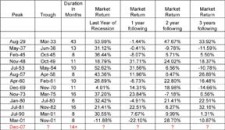For starters, let's look at some of the data:
In 1933, over 4000 banks failed. Through the date of this report (in early Feb. 09), there have been 31 bank failures requiring involvement of the FDIC. I fully expect 2009 to see many more casualties in the banking sector, but we are a far cry from the fear surrounding bank deposits that fostered the bank runs of the past. In fact, the FDIC was created by the Glass-Steagal Act in response to the bank panic of 1933, and fosters confidence in banking deposits... even in an environment like we have today.
Employment, or the reduction of it, is also a major concern. Our economy has lost over 2.5 million jobs during the past 12 months, and the trajectory for the employment situation continues to be down.
During the Great Depression, however, the unemployment rate topped out at 25 percent.
Today, after the worst jobs year since WWII, we face an unemployment rate of 7.6 percent. This number is likely to go higher as the economy continues to crawl along and companies cut expenses, but we are worlds apart from having a quarter of the workforce unemployed!
Admittedly, it is hard to pull back from the day-to-day news that report grim headlines. Looking at how markets have historically responded to both short and longer term bear markets, however, gives me hope. We do not know the timing of the rebound, but history is telling me that we are getting close.
Column provided to PRIME by: St. Germain Investment Management; 1500 Main Street, Springfield, MA; 413-733-5111 or 1-800443-7624; web site:
www.stgermaininvestments.com
